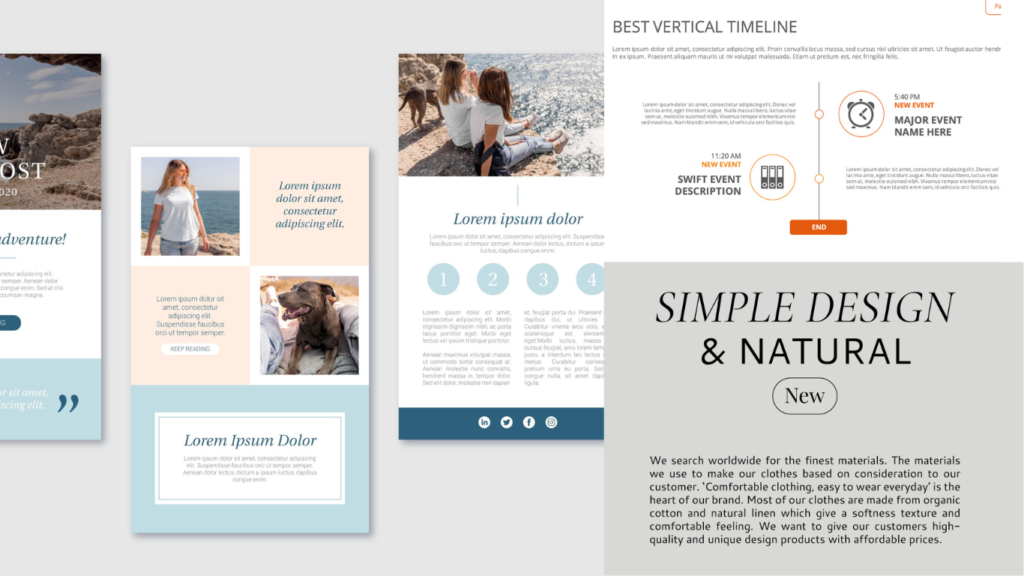Enhance Your Email Game with the Right Formation today’s digital age, email communication remains a cornerstone of professional and personal interactions. Whether you’re sending a job application, sharing important updates, or just keeping in touch with friends, the way you format your emails can significantly impact their effectiveness. The age-old debate between HTML and plain text email formats continues to perplex many. In this comprehensive guide, we will explore the nuances of Best email format, answering the pressing question: What’s the Best Email Format: HTML or Plain Text?
Introduction
Emails have evolved significantly since their creation. They are not just text-based anymore; you can add images, colors, and interactive elements to make your emails more engaging. But does that mean you should always opt for HTML emails? Not necessarily. The choice between HTML and plain text Best Email format depends on various factors, including your purpose, audience, and message content.
In this article, we will unravel the mystery behind Best email format. By the end, you will have a clear understanding of when to use HTML or plain text, helping you craft emails that resonate with your recipients.
HTML or Plain Text: The Fundamental Choice HTML Emails: When to Use Them HTML emails are visually appealing and allow for creativity in design. They’re best suited for:
Marketing Campaigns: When you want to showcase products, promotions, or events with eye-catching graphics and clickable links.
Newsletters: To deliver news, updates, or articles in a structured and visually appealing format.
Invitations: Creating visually appealing event invitations with RSVP buttons and multimedia elements.
Transactional Emails: Providing order confirmations, shipping updates, and receipts with a professional touch.HTML emails are like digital canvases, offering endless possibilities for design and interactivity.
Plain Text Emails: Simplicity and Universality
Plain text emails, on the other hand, are stripped down to the basics. They shine in scenarios where simplicity and universality matter:
Personal Communication
When sending casual emails to friends, family, or acquaintances. Privacy and Security: Plain text emails are less susceptible to phishing and security threats. Accessibility: They are reader-friendly for people using screen readers or with visual impairments. Quick Updates: For conveying simple messages or urgent information without distractions. Plain text emails are like handwritten letters in the digital world – straightforward and universally understood.
The Impact on Deliverability
Your choice of email format can affect whether your messages land in the recipient’s inbox or spam folder. HTML emails, due to their design complexity, might trigger spam filters if not properly configured. Plain text emails, being simpler, have a higher chance of reaching the inbox.
Tip: If you opt for HTML emails, ensure they are mobile-responsive and thoroughly tested on various email clients to avoid formatting issues.

A Balancing Act: Mixing HTML and Plain Text Best email format.
In some cases, you don’t have to choose one over the other. Many email marketing platforms allow you to send hybrid emails, which consist of both HTML and plain text versions. This ensures that recipients who prefer plain text can still read your message while those who prefer HTML can enjoy the enhanced design.
FAQs
Can I send attachments in plain text emails?
Yes, you can attach files to plain text emails, but keep in mind that some email clients may not display them as neatly as in HTML emails. For important attachments, consider using HTML format.
Which format is better for cold outreach emails?
When reaching out to new contacts, plain text emails tend to be more personal and less likely to be marked as spam. However, the choice depends on your brand’s style and the context of the outreach.
Are HTML emails more expensive to create?
HTML emails may require more design and coding effort, which can increase upfront costs. However, the potential for higher engagement and conversion rates can outweigh the initial investment.
Can I track the performance of plain text emails?
While tracking options are more limited in plain text emails, you can still monitor open rates and click-through rates to assess their effectiveness.
Is it possible to convert HTML emails to plain text automatically?
Yes, some email clients can convert HTML emails to plain text for recipients who prefer this format.
What is the best practice for email signatures in plain text emails?
In plain text emails, keep your signature concise with essential contact information, such as your name, title, company, and phone number.
Conclusion
In the eternal debate of HTML vs. plain text email formatting, there is no one-size-fits-all answer. Your choice should align with your specific communication goals and audience preferences. Remember, it’s not just about the best email format; the content, tone, and relevance of your message play crucial roles in successful email communication. So, the next time you sit down to compose an email, ask yourself: “How should I format my emails – HTML or plain-text?”